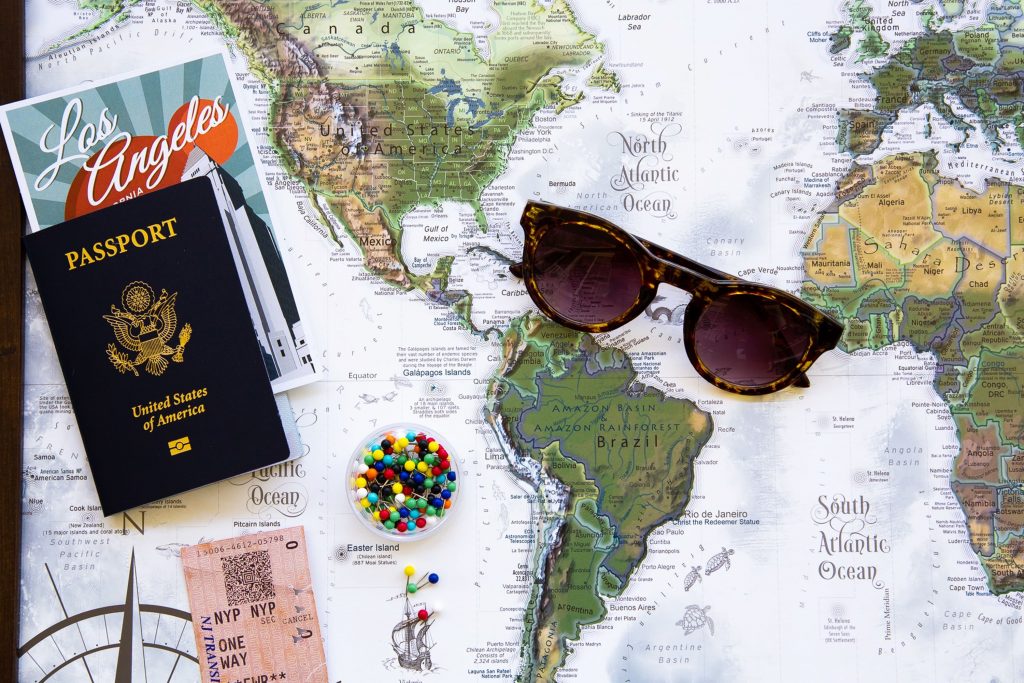Table of Contents
TogglePlanning to study in the United States? As an international student, you will need to choose from three main visa types: F-1, J-1, or M-1. Each visa serves different educational purposes and comes with its own set of rules. While F-1 and J-1 visas may allow for some employment opportunities during your studies, M-1 visa holders cannot work during their programme. This guide will help you understand the requirements, costs, and restrictions for each visa type, enabling you to make an informed decision about your academic journey in America.

Types Of Student Visa In The USA
The United States offers various types of student visas for international students who wish to pursue academic, vocational, or cultural exchange programmes. Each visa type is designed for a specific category of students based on their course of study, programme duration, and other eligibility requirements. Understanding the differences between these visas is essential to selecting the one that best fits your educational goals. To further understand the types of Student visas in the USA, it is important to evaluate each visa category based on your study plans, work opportunities, and eligibility requirements.
| Visa Type | Purpose | Eligibility | Dependents | Employment |
| F-1 Visa | For students pursuing full-time academic programmes at accredited U.S. colleges or universities, including English language programmes. | Requires enrollment in a programme demanding more than 18 hours of study per week. | Spouses and children can accompany on an F-2 visa, but F-2 dependents cannot work. | Can work on-campus and apply for Optional Practical Training (OPT) after completing studies. |
| J-1 Visa | For exchange visitors participating in programmes that promote cultural exchange, such as study abroad or internships. | Must be sponsored by an approved programme and meet specific eligibility criteria. | Spouses and children can accompany on a J-2 visa; J-2 dependents may work with prior authorization. | Employment allowed with permission; may have a two-year home residency requirement after programme completion. |
| M-1 Visa | For students attending vocational or non-academic programmes. | Granted for specific training programmes, with visa validity based on programme length. | Spouses and children can accompany on an M-2 visa, but M-2 dependents cannot work. | Not allowed to work on or off-campus and cannot change status to F-1. |
US Student Visa Process And Application Requirements
You must first learn about your university’s admission and the USA student visa requirements before assembling your application for a student visa in the USA. Be mindful of the following:
| Category | Details |
| Academic Qualifications | Each institution has its own set of requirements. Check test scores and academic criteria for your chosen university. |
| Financial Stability | Proof of sufficient funds to cover tuition and living expenses is required. |
| Medical Insurance | Documentation of health insurance may be needed to cover medical expenses. |
| English Language | A minimum IELTS score of 6.5 is required. Students with prior English education may apply without IELTS. |
| American Student Visa Requirements | – A passport valid for at least 6 months. – Acceptance at a SEVP-approved university and Form I-20. – Visa application. – Passport-size photograph as per requirements. |
Documents Required For A USA Student Visa
A U.S. student visa application requires specific documents to verify your eligibility, financial stability, and study plans. Missing documents can lead to delays or rejection. Below is a list of the essential documents needed for a successful application.
| Document | Description |
| Valid Passport | Must be valid for at least six months beyond your intended stay in the U.S. |
| Form I-20 | Issued by the SEVP-approved institution confirming your acceptance and program details. |
| DS-160 Confirmation Page | Confirmation of the completed online visa application form. |
| SEVIS Fee Receipt | Proof of payment for the SEVIS fee ($350). |
| Visa Fee Payment Receipt | Confirmation of payment for the visa application fee (MRV fee, approximately $160). |
| Visa Interview Appointment Confirmation | A letter confirming your scheduled visa interview at the U.S. embassy or consulate. |
| Passport-Sized Photographs | Recent photographs that meet U.S. visa specifications. |
Additionally, international students should be aware of the USA student visa rejection rate, which varies depending on financial proof, academic credentials, and interview performance. Proper preparation and documentation can improve your chances of visa approval.
Student Visa USA Cost
Applying for a America student visa involves specific mandatory fees that applicants must pay as part of the process. These fees cover administrative and tracking costs associated with student visas. The two primary expenses include the SEVIS Fee, which supports the Student and Exchange Visitor Information System, and the Visa Application Fee (MRV Fee), which is required to process your visa application. Below is a breakdown of these costs to help you plan your budget accordingly.
| Fee Type | Amount | Purpose |
| SEVIS Fee | $350 | The Student and Exchange Visitor Information System (SEVIS) is required to track students and exchange visitors in the U.S. |
| Visa Application Fee (MRV Fee) | $185 | Fee for processing the f1 visa USA application. |
How Long After Graduation Can You Stay In The USA?
After graduation, international students in the U.S. on an F-1 visa can typically stay for up to 60 days. This grace period prepares students for departure or transition to another visa status. Here’s a detailed breakdown of the options available.
| Category | Details |
| 60-Day Grace Period | |
| Duration | After completing your academic programme, you have 60 days to remain in the U.S. |
| Purpose | This time can be used to prepare for departure, apply for a status change, or enrol in a new academic programme. |
| Optional Practical Training (OPT) | |
| Post-Completion OPT | F-1 visa holders can apply for post-completion OPT, allowing them to work in their field of study for up to 12 months after graduation. |
| STEM OPT Extension | Students with a STEM degree may be eligible for a 24-month extension, allowing up to 36 months of work authorisation. |
| Application Timing | You can apply for OPT up to 90 days before graduation and within 60 days after your programme ends. |
Understanding the post study work visa in USA options will help students plan their careers effectively after completing their studies.
Conclusion
Choosing the right student visa is a crucial step for international students planning to study in the U.S. Understanding the different visa types—F-1, J-1, and M-1—along with their requirements, costs, and work opportunities can help you make an informed decision. Ensuring proper documentation, financial stability, and meeting academic criteria will improve your chances of a successful visa application. By preparing thoroughly and following the correct process, you can make your study abroad dream in the U.S. a reality.
FAQs
Can I work on a student visa in the US?
Yes, it is possible to work on a student visa in the U.S., specifically with an F-1 visa, but there are specific regulations and restrictions you must follow.
How long can a student wait back in the US with a student visa?
After graduation, international students in the U.S. on an F-1 visa can stay for up to 60 days. This grace period prepares students for departure or transition to another visa status.
Is travelling outside the US possible on a student visa?
Yes, travelling outside the U.S. on a student visa (F-1) is possible, but there are specific requirements and considerations you need to keep in mind to maintain your visa status.
Can I attend my U.S. student visa interview if I haven’t paid the SEVIS fee?
No, attending the USA study visa process interview without paying the $350 SEVIS fee is not allowed. Payment is mandatory, and a receipt is required for the interview.
What is the validity period of a U.S. student visa?
The validity of a U.S. student visa, specifically the F-1 visa, can vary based on several factors, including the length of your academic program and the specifics outlined on your Form I-20.
Thank you for reading this blog on ‘Student Visa In The USA: Types, Process, Requirements & Cost.’ If you’d like to read more, here are some blogs that may be of interest to you –


















1 thought on “Top PGDM Courses In Canada: Universities & Eligibility”
I have done Bachelor’s in Culinary Arts from India and completed my graduation in the year 2022 .I am 22 years old. After graduation, I have done 1 year paid internship from USA .Now, I would like to take occupational experience and learn culinary skills and also do masters in Culinary arts.How can I find the college n best course / country where I can persue studying further